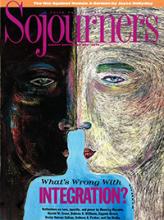FOR MANY BLACK PEOPLE, integration is almost an obselete word. It is certainly not a goal for which oppressed black women now strive. Over the last 30 years, if female veterans of the 1960s civil rights movement have learned anything, they have learned how integration works in America with regard to black women. A few with middle-class training, values, and goals are taken into the white-dominated institutions of the society. Allowed presence and the illusion of power and acceptance, they become instruments the institutions try to use to accomplish two goals: to show the public that the particular institution is neither racist nor sexist and to control other black people, the non-middle class "unruly outsiders" (female and male) pressing the institution to change what the "outsiders" take to be discriminatory policies.
Black women have learned that integration for them has meant the same as it has meant for black men. Unless they are constantly on guard, they can become "tokens" by which social institutions attempt to reinforce the American myth that only a few blacks are intelligent enough or educable enough to be trained for success at the high decision-making levels of the society.
So, if by integration one means the thorough interconnection of masses of black people and masses of white people in interconnected social systems for the purpose of achieving the well-being of all the people, there has been no real integration of black people as a whole into American society. The question here, then, is not how integration has helped or hindered African-American women's activities and relationships. The question is: How has black people's contact (not integration) with American social systems and movements impacted upon those areas of black life in which black women have historically focused their time, energy, and concern?
Read the Full Article
